Existing User Log In
New User Registration
Register for a free account to gain full access to the VGChartz Network and join our thriving community.



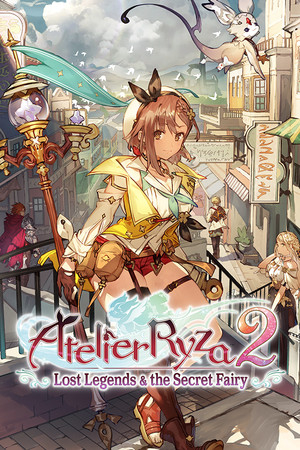

America - Front
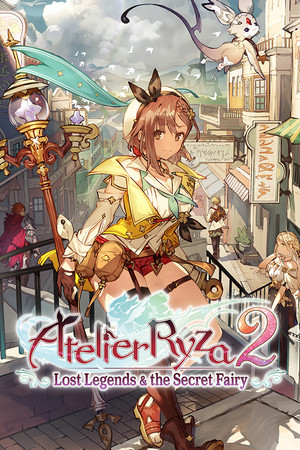

America - Back

Gust
Role-Playing
 (Add Date)
(Add Date) (Add Date)
(Add Date) (Add Date)
(Add Date)
| Owners: | 0 |
| Favorite: | 0 |
| Tracked: | 0 |
| Wishlist: | 0 |
| Now Playing: | 0 |
By Thomas Froehlicher 27th Jan 2021 | 5,455 views
With no less than half a million copies of Atelier Ryza shipped worldwide, Gust's beloved RPG series has finally managed to reach a large-scale audience. But great success doesn't come without great responsibilities. The previous game broke new ground and many long-lasting traditions within the franchise, and fans expected a large investment of resources in Atelier Ryza 2 to boost the amount content in this follow-up. Now it's time to see if there's a vision for the series beyond purely sales growth.
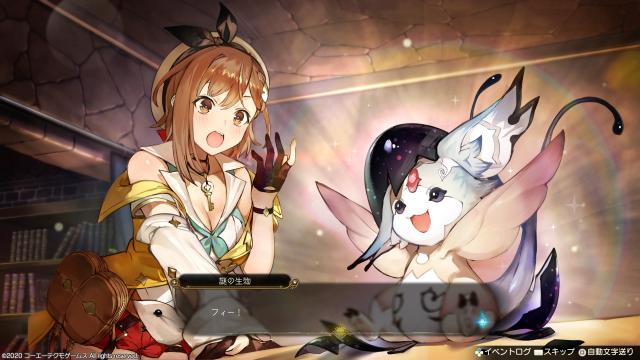
The first thing I was hoping for before jumping into Atelier Ryza 2 was that it would ditch the naive atmosphere that plagued most of Atelier Ryza. Unfortunately the sequel fares even worse on that front. The story starts with Ryza receiving a mysterious black egg. After moving to the capital in order to sharpen her alchemic skills, she witnesses the birth of a small creature called Fy. At the same time, Ryza meets her childhood friend Tao, now a model history student. It's been three years since their last adventure, so both of them go straight out to the local ruins.
What bothers me the most about Atelier Ryza 2 is the complete lack of driving force behind its narrative. After roaming the first dungeons out of simple curiosity, it very much feels like Ryza and her party then do all that they do just to walk and feed the group's mascot. It's not exactly your dream-like JRPG scenario. Let me be clear - I haven't seen such a bland narrative in years. Fy (who's clearly there in order to please the mainstream audience) would make a fine Pokemon, but it's a complete disaster in an Atelier game. An astonishing number of scenes are dedicated just to showing Ryza and the others petting the creature and nothing else. It's so simplistic that it quickly starts to become annoying.
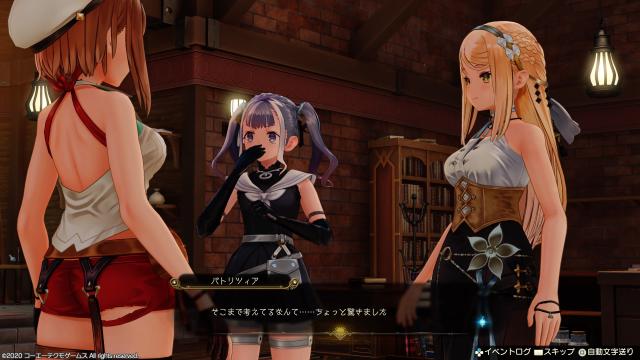
Not only does the mascot take up far too much screen time for what it is, but the other characters are barely an improvement over it. True, there are more character events than in the first title, but I can't recall even one that was genuinely fun or interesting. The vast majority of the narrative is little more than a long series of cliches about the beauty of friendship and the value of trust, plus a terrible love affair. Every single one of Patricia's scenes is about her passion for Tao, her entire personality being strictly limited to this one aspect of her life. I purchased an Atelier game but what I got was something with the tone of an otome visual novel. Klaudia, for example, doesn't say anything besides tell Ryza over and over again how dear she is to her. You don't even come to know why she's now fighting with a bow. In general there's very little enjoyable interaction between the characters.
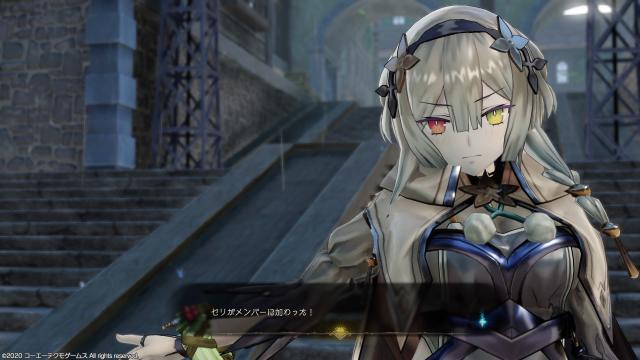
The most worrying aspect of all this is Seri, Lila's Oren compatriot. Even after clearing the game I couldn't figure out who she was, where she came from, or what happened to her. She is literally just a visual design made into a 3D model and nothing more. The designer, Toridamono, is brilliant and he draws charming characters, but this is a video game - the major characters and protagonists should have solid backgrounds and personalities as well. On top of that, despite Toridamono's popularity and quality output, the game's developers only saw fit to request a handful of illustrations for this title, continuing the original Ryza's trend of fewer event illustrations.
The artwork is, once again, not as compelling as in previous Atelier trilogies. One reason for that is the lack of multiple endings. Unlocking various endings has always been a great challenge, full of surprises and wonder, but here Gust offers merely a senseless and boring epilogue. Such superficiality is unacceptable given the long-running tradition of multiple endings in the series. The non-playable characters are also even shallower and more badly designed than they were in Ryza. I've come to wonder if Gust isn't mixing up, or worse, attempting to turn Atelier into one of those "life simulation" franchises like Story of Seasons, which are more successful among casual audiences.
The Atelier I know is where drunk heroines reel off nonsense at each other, men debate the color of pigeons, main characters take part in eating contests, alchemists make fun of each other, and witches with pointed hats brag their skills. All of this is called Japanese-style fantasy, and it's painfully lacking in this entry. Atelier is supposed to be fun and Ryza 2 just isn't. There are no famous or well-regarded JRPGs that focus on such watery and moralizing themes as those found in Ryza 2; the best ones tend to have humor, strange mini-games, unexpected encounters, quirky characters, and so much more. Final Fantasy VII Remake brilliantly incorporated all of those elements, for example. It could even have been westernized like Final Fantasy XV. Instead Atelier Ryza 2 exhibits nothing but triviality and fake emotions that were torturous for this Atelier veteran; here the fantasy isn't final, it's already been lost.
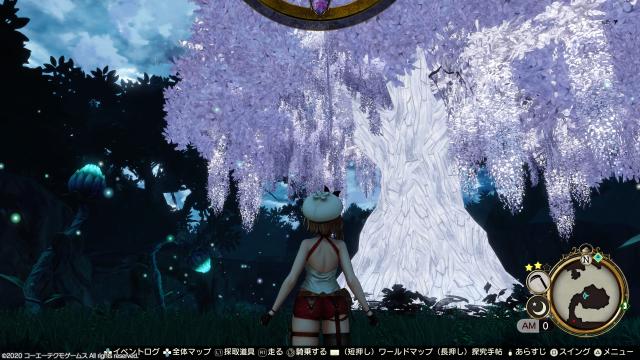
Don't expect to find solace in the progression or exploration systems either. This sequel is once again a very linear affair, with little sense freedom in or out of the barren dungeons. It's a long way from the clever game architecture of Atelier Firis, for example. In the ruins you have to gather hints scattered here and there thanks to some kind of magic compass. Once you have them, you need to match them to the local legend. The issue here is that this matching is terribly simplistic, as the exact same word appears bolded in green on both sides. There's no thinking required for these 'puzzles' and consequently zero value is added to the gameplay. It feels like the developer is briefly sending players back to middle school, it's that dull.
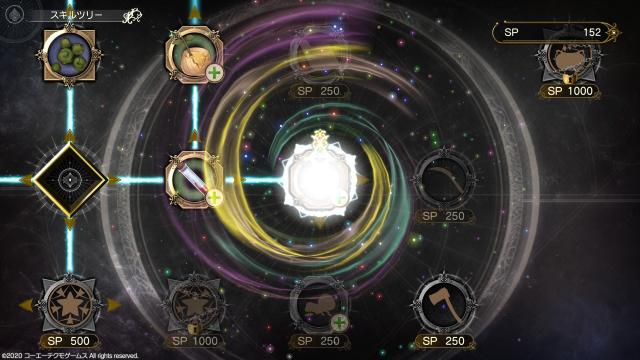
Fortunately, Gust did get the alchemy aspect right. The alchemy system here inherits the progress made in Atelier Ryza and adds yet more improvements. Let's just remember that the heart of Atelier's gameplay is the concept of the player creating all of the gear and items he or she will need to fight their way through the story from scratch. Ryza and the party visit fields, collect materials, and then go back to the Atelier to craft useful equipment. In Ryza 2 the main recipes are unlocked by spending skill points (SP). You gain plenty of SP in donjons, but also by creating any item via alchemy. This enables swift progression, as you can get plenty of useful recipes quickly, and also upgrade your harvesting tools or the quality limit. The higher the quality, the better weapons and armor are.
But those are just the basics. In order to keep up with the strength of monsters you'll need higher level recipes, which can be unlocked at the end of the alchemy tree of existing recipes. Basically, you need three ingredients to make one item, but you might need four or five times that number in order to completely fill the alchemy tree and advance to the next recipe. That also often requires much rarer materials, which means your observation and management skills are tested (you need to remember where to find nearly every type of material and make sure you don't run out of them).
The good news for players in Atelier Ryza 2 is that they can preview what they'll find at a given location. The game even tells you what items you can find with each type of tool (axe, rod, sickle, etc.). This is a big plus in terms of inventory management because you're less likely to miss that one critical item, and you'll also find a better balance of items.
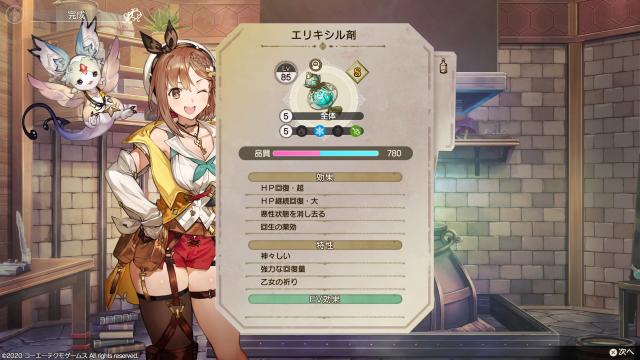
As you progress through the story you'll find items with increasingly powerful traits. In Atelier, a trait refers to a passive skill you can transfer to the equipment you create, making healing items heal better and weapons do more damage. Trait management is considerably better in Atelier Ryza 2 because you no longer lose traits. Throughout the series you can transfer a maximum of three traits to one item, but for that you need to unlock the three corresponding slots. Traditionally you would waste one trait if you wound up short of resources before hitting the third slot. In Ryza 2 the trait is saved, but locked, and won't become effective until you use Item Rebuild (see my Atelier Ryza review) to "validate" it with additional materials. This is a very welcome addition because powerful traits can be hard to come by - some of them are only available in a single location on the entire world map.
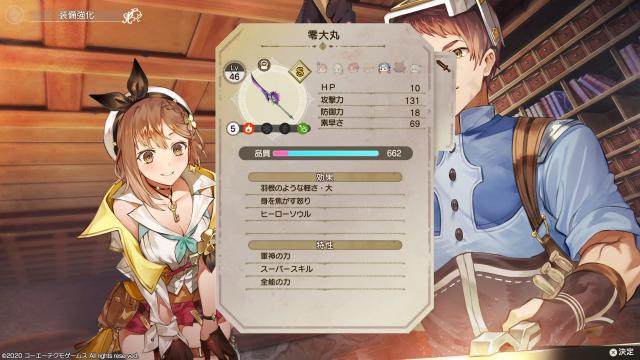
Even beyond the core alchemy system, the local smith can now add terrific qualities to weapons, armor, and accessories. You need to bring him ultra rare materials for this though. I counted about twenty such materials in the whole game, but they do make you significantly stronger. Eiyu no Tamashii provides Hero Soul, for example, a top-notch skill that boosts all stats during boss fights, but it's virtually impossible to find. Another example is Manten no Yozora, which boosts stats at night. Which goes to show that there are some very refined and strategic options in the game, with first-class naming sense, no less.
The main bosses are very tough, making it nearly impossible to clear Ryza 2 without high mastery of the alchemy system, even on normal mode. Fortunately, thanks to improvements made since Atelier Ryza, crafting items has never been more ergonomic or enjoyable. Alchemy is a giant, fascinating puzzle with nearly infinite possibilities that can keep you hooked for several hours between main parts of the story. It's a remarkable achievement which, on its own, prevents Atelier Ryza 2 from frankly being a terrible RPG.
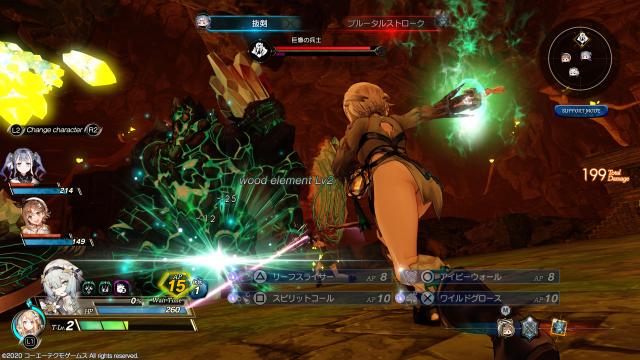
Sadly, the battle system is a step back. It just feels like Gust wanted to make it simpler. The Tactics level is still present - the higher it is the better your party's combos. But whereas in Atelier Ryza the player had to raise the Tactics level manually, the game now does it automatically for you in the sequel. Requests made by AI-controlled allies (allowing you to benefit from useful support skills) are also much less varied this time around and blatantly easy to respond to. You now only have to repeatedly push the attack button and chain (admittedly very pretty) attack skills. The pace of battles has improved, but the sense of strategy has been lost. It is at least more spectacular than ever before, especially thanks to a new system called Core Drive, which involves mixing a set number of items together to trigger an extra move with a very flashy animation and high attack or defense power. Atelier Ryza 2's combat therefore looks very cool combat but it feels a lot more passive, which is a shame. I fear Gust's obsessional quest for more accessibility will ultimately discourage core fans.
One last thing that bothered me about Atelier Ryza 2 is the removal of both Empel and Lila from the list of playable characters. While they had major roles in Atelier Ryza, they now seem to travel on their own for no real reason, never joining your party. Sharp import players have discovered that, even after gathering all of the characters, there are still three empty slots in the party menu. Gust has a pretty bad record in this respect, so I suspect they might return via the PlayStation Store...

As a core Atelier fan, playing through Atelier Ryza 2 has been a frustrating experience. It not only purposely dismantles many important series fundamentals, but the narrative feels rushed, the adventure is highly linear, and it's set in a barren world filled with boring dungeons. Character development has also become abysmal and the relations between those characters are the least interesting I've witnessed in 10+ years. All I see in these decisions is an intentional shift to try and accommodate blander mainstream standards, which might attract more casual gamers but inevitably erases the Atelier experience as we've come to know it. The alchemy system is now nearly perfect and extremely enjoyable - it's the one clear highlight of Ryza 2 - but it's the very last bastion before a total collapse in series quality.
After graduating from a French business school, Thomas felt an irresistible force drawing him to study Japanese, which eventually led him to Japanese Profeciency Test level 1 in 2012. During the day, Thomas is a normal account manager. But at night he becomes Ryuzaki57, an extreme otaku gamer hungry for Japanese games (preferably with pretty girls in the main role). His knowledge now allows him to import games at Japanese release for unthinkable prices, and then tell everyone about them. You may also find him on French video games media. Feel free to contact on twitter at @Ryuz4ki57









